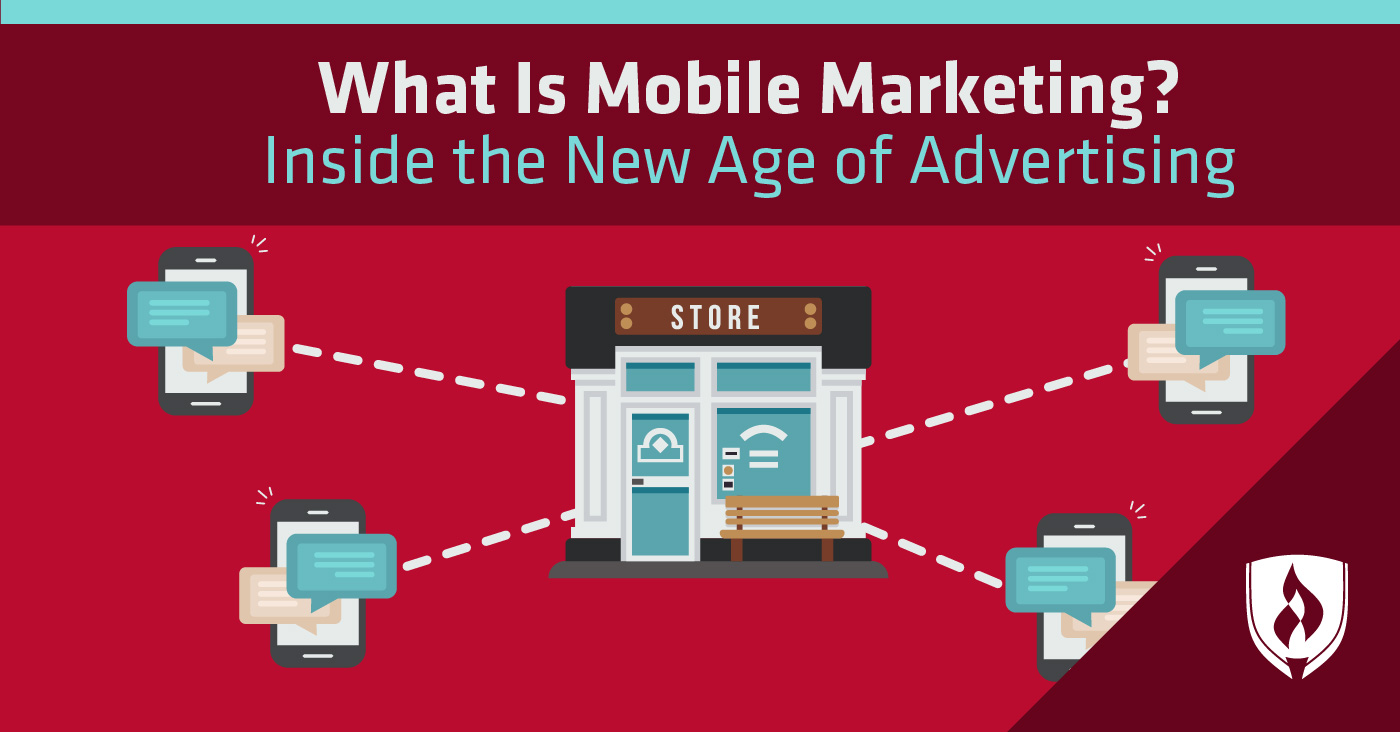
According to the Pew Research Center, 95 percent of Americans now own a cell phone, with 77 percent owning a smartphone. With these stats in mind, it’s no wonder that more people are turning toward their portable devices to conduct internet searches. In fact, 10 percent of Americans don’t even have broadband internet at home, but instead rely only on their smartphones to provide online access.
Today, more and more people are using their phones in lieu of desktop computers; from online shopping to checking and writing emails, it can all be done at the touch of your finger. As you can see, times are changing and it’s not only the evolution of smartphones, but how we are using these smartphones that are also changing how businesses work.
You may have finally wrapped your head around digital marketing and how it has evolved from traditional marketing, but there’s a new area emerging that anyone interested in business should know about: Mobile marketing. So what is mobile marketing, and how does it fit into the rapidly growing digital economy? We talked to the experts and found out.
What is mobile marketing?
Mobile marketing is advertising and marketing strategies and campaigns tailored specifically for viewing on mobile devices. This includes social media ads, emails, in-app messages, location-based campaigns, push notifications and much more.
Marketing for mobile “means that [campaigns] are designed to be viewed on mobile screens, by users with limited UX options, and they generally tend to be more simplistic than their desktop counterparts,” Kim Stuart of Mobile Wallet Marketer, says.
Think about the last time you went online on your smartphone—were you served an ad on Facebook? Or a banner ad on a website? Chances are these campaigns were specifically created to fit your mobile device. Shorter taglines, calls-to-action that are more direct, resized images and more creative formatting (such as videos and carousels of images) are characteristic of these ads.
“Mobile marketing is the future of advertising, and it is moving fast!” says Elizabeth Venanzi, online marketing manager at Sparq Designs. So whether you are a business pro or looking into joining the field, it’s worth knowing about this growing sector of business.
How does mobile marketing differ from traditional marketing?
With traditional marketing, business professionals have large amounts of space to create visually stunning campaigns while having room for content too. As most smartphones are the size of the palm of your hand, there is less space to work with in mobile marketing. This discrepancy in space puts pressure on marketers to create campaigns that are not only concise, but also are still user friendly and accessible, too.
However, mobile devices–as small as they are–can lead to a wealth of information for marketers. “Traditional marketing like TV, radio and billboards give the marketer very little data on the consumer and none of it is in real time,” says Jonathan Simon, professor of digital marketing at the University of Ottawa. “In mobile marketing, you can see all the same metrics as you do in desktop marketing, like impressions, clicks and conversions, but you can also see additional data like location and time spent in the app.”
This data is invaluable to marketers—it helps them hyper-target their campaigns to reach the right audience. They can also use the data to adjust the campaigns in real time, tweaking things that aren’t working and learning from those who are successful.
Another difference between traditional and mobile marketing is in the mindset of consumers. Marketers working on mobile campaigns need to keep in mind who uses their smartphones and when they are used. People on their phones often have less time and shorter attention spans than those watching TV or using their desktops.
“They might be distracted or trying to accomplish a quick task, but they also could be standing in the aisle of a store trying to choose between your product and a competitor’s,” says Elliott Brown, marketing consultant and founder of Back Office Basics.
Therefore, marketers need to be more creative and resourceful to capture attention in a limited amount of time. “You need to be much more attuned to making sure you always deliver value,” Brown says. “Otherwise, you’ll become part of the background noise that mobile users are constantly trying to filter out.”
Who works in mobile marketing?
Mobile marketing is a rapidly growing area of business, but it wasn’t always. “My job didn’t exist when I started college,” Venanzi says. She explains that even a few years ago, desktop marketing ruled the marketing world.
But now the increase in social media and on search engines, such as Google, are creating positions that previously never existed. Jobs in search engine optimization (SEO), app development, pay-per-click (PPC) management, mobile ad management and mobile user experience (UX) design are growing.
Additionally, Google is beginning to use mobile-first indexing, which means that it is ranking websites based on factors that put a premium on a mobile searcher’s experience. This increased emphasis on mobile devices means every marketer will need to be knowledgeable about mobile marketing and how it can affect a site—not just those in mobile marketing positions.
Regardless of whether you are a marketing pro looking to switch into a new role or a student exploring your options, there’s a place in the growing world of mobile marketing for you!
Is this your calling?
Mobile marketing is on the rise, encroaching on traditional and even other digital forms of marketing. If the creativity, strategy and innovative nature of this field appeals to you, you might just be an excellent fit for a digital marketing career. Still not sure if this is the right field for you? You’ll want to check out our article, “6 Signs You Might Be Destined to Work in Marketing,” to learn more of the telltale traits you may possess that lend themselves well to a marketing career.
Related Articles:




